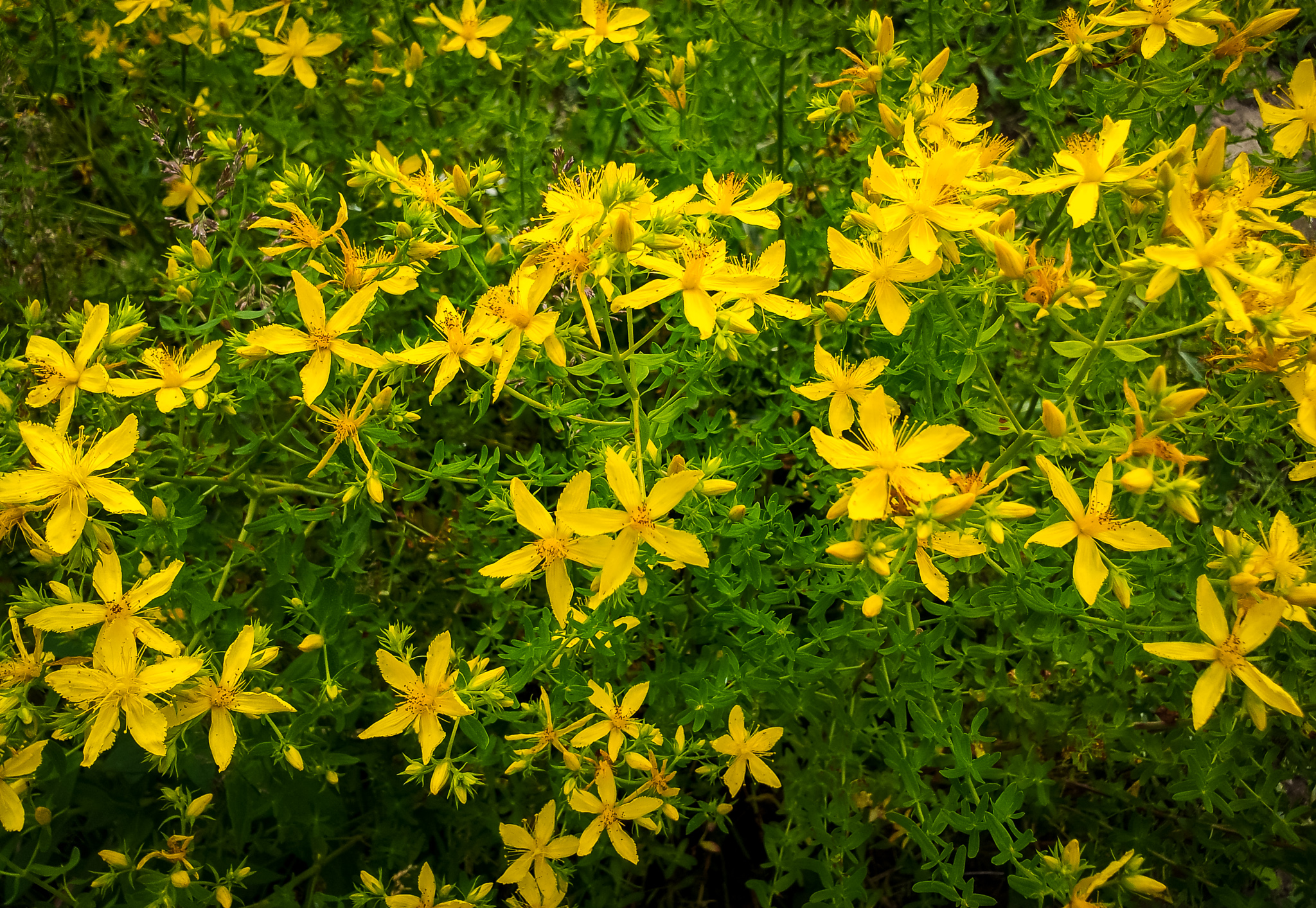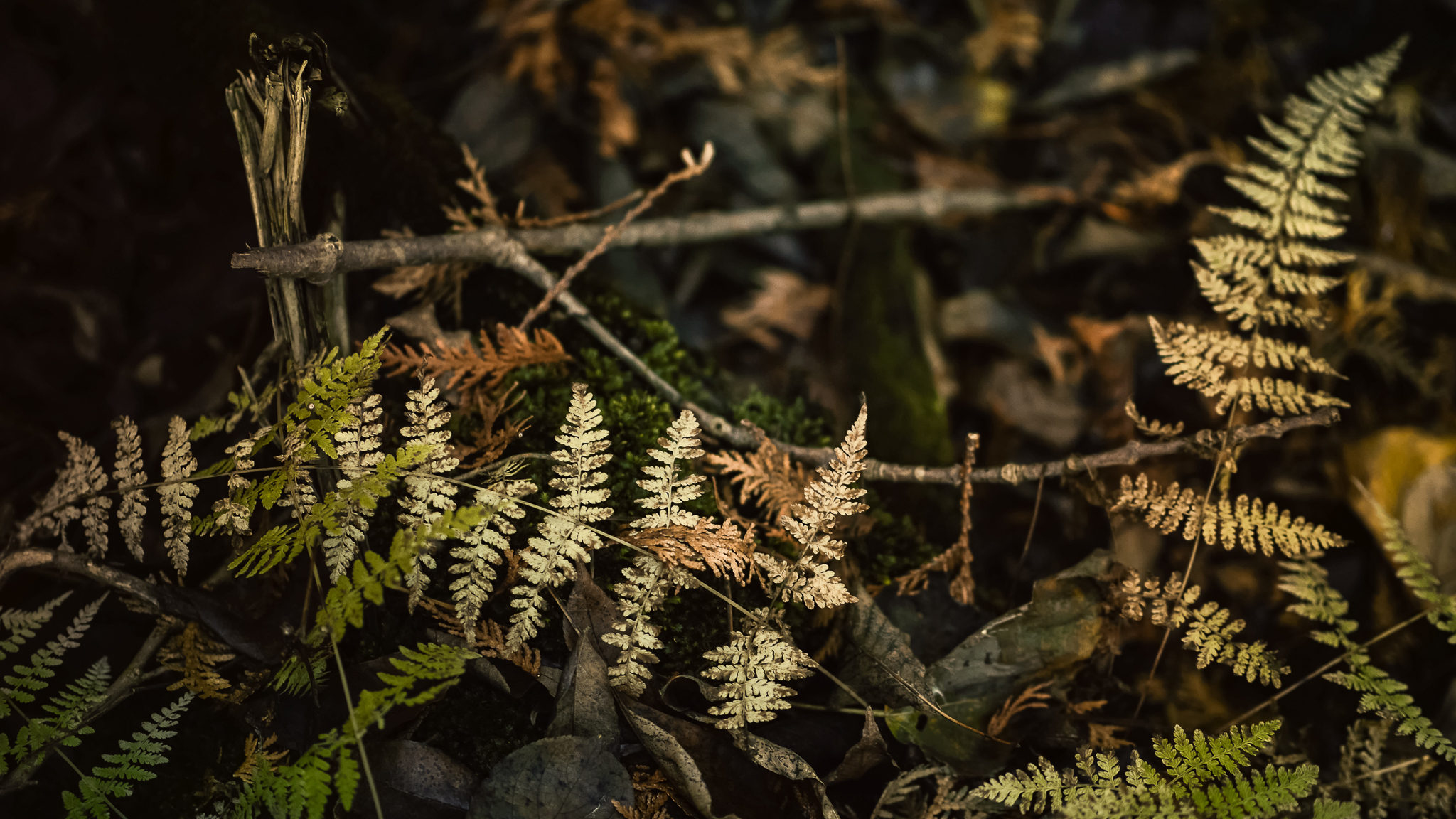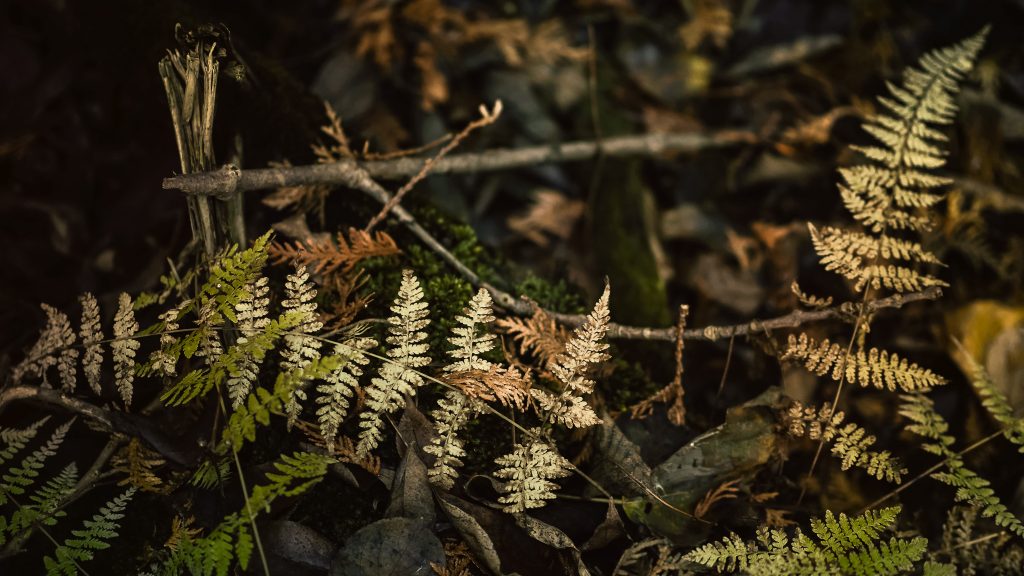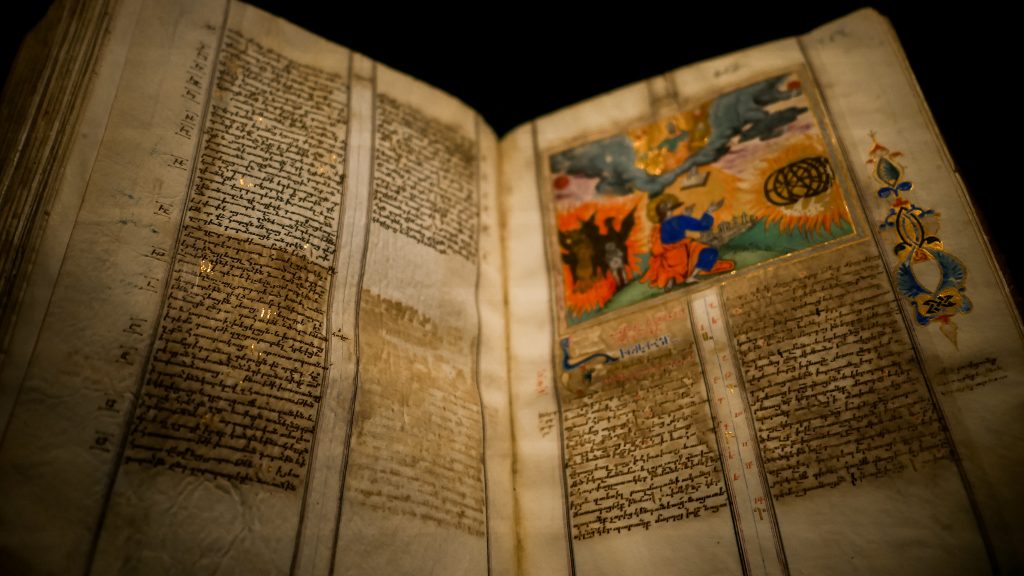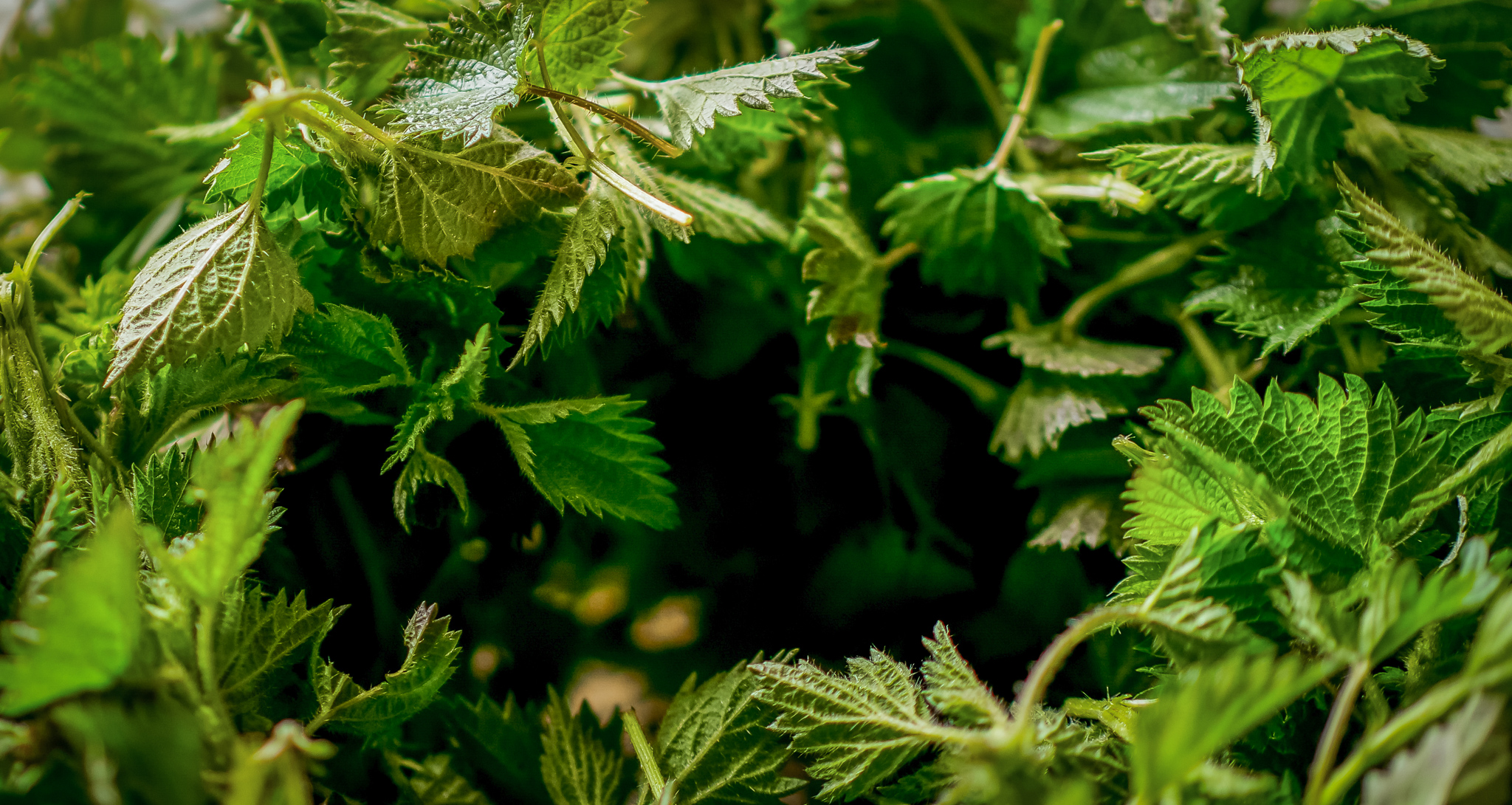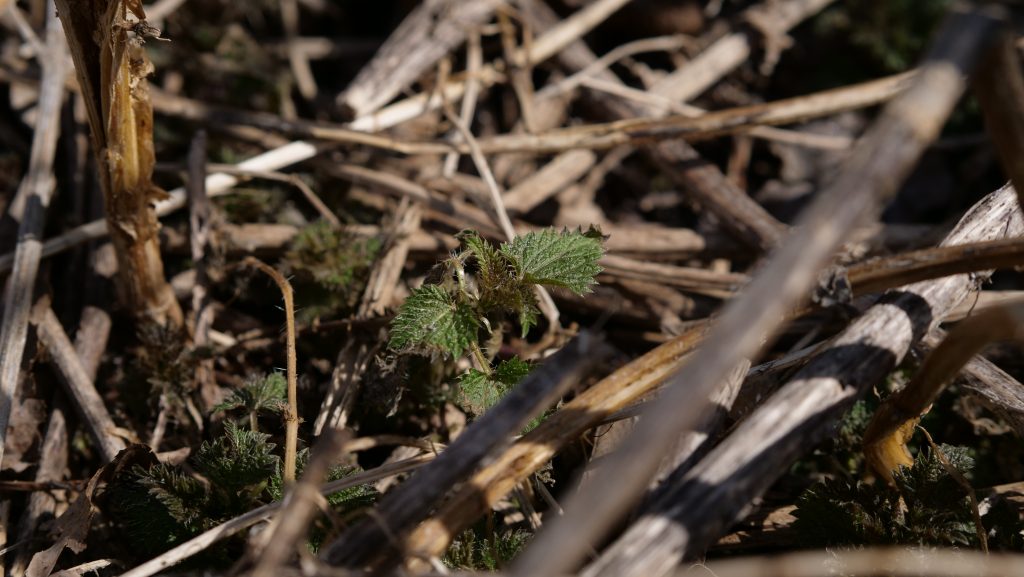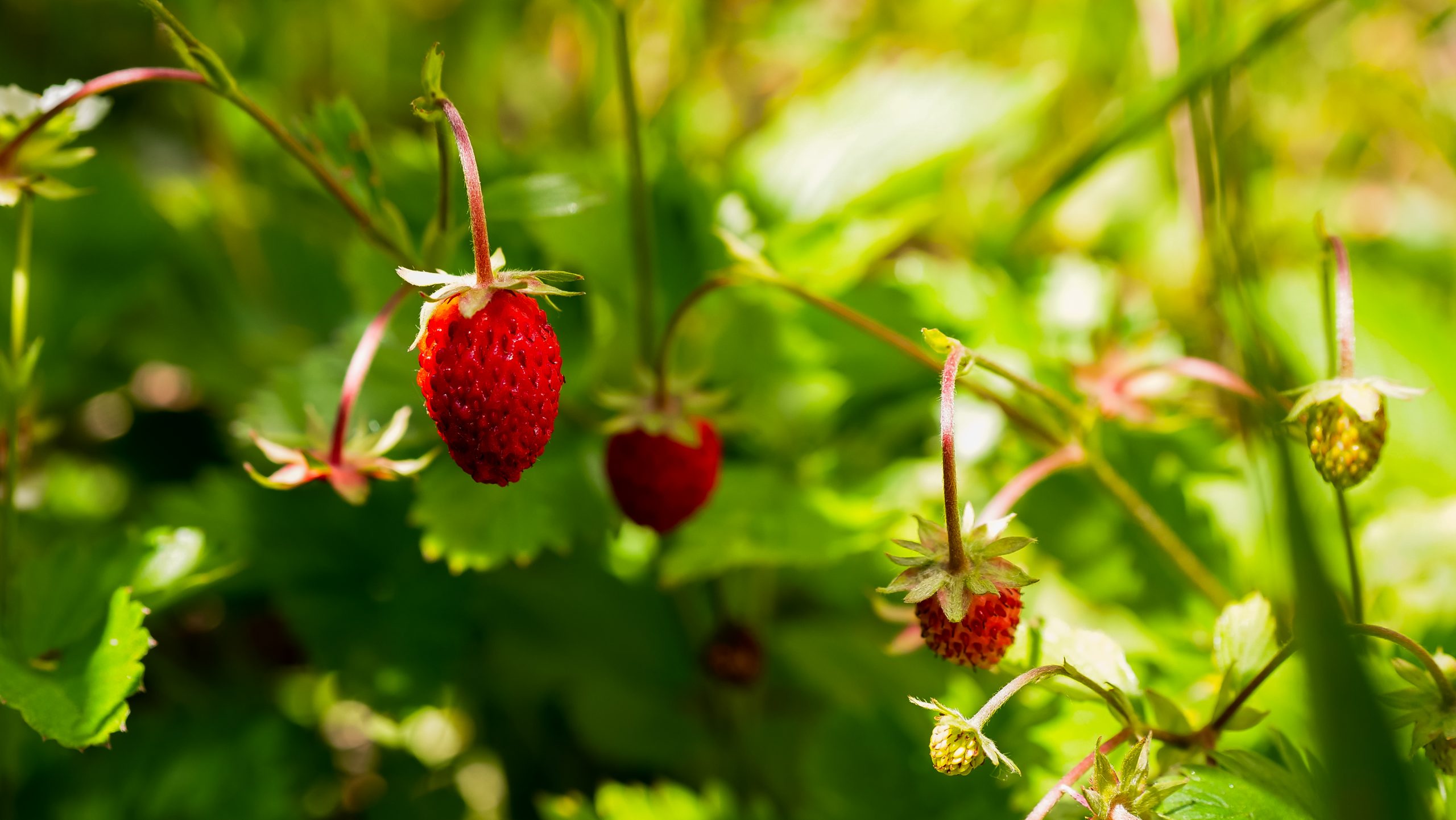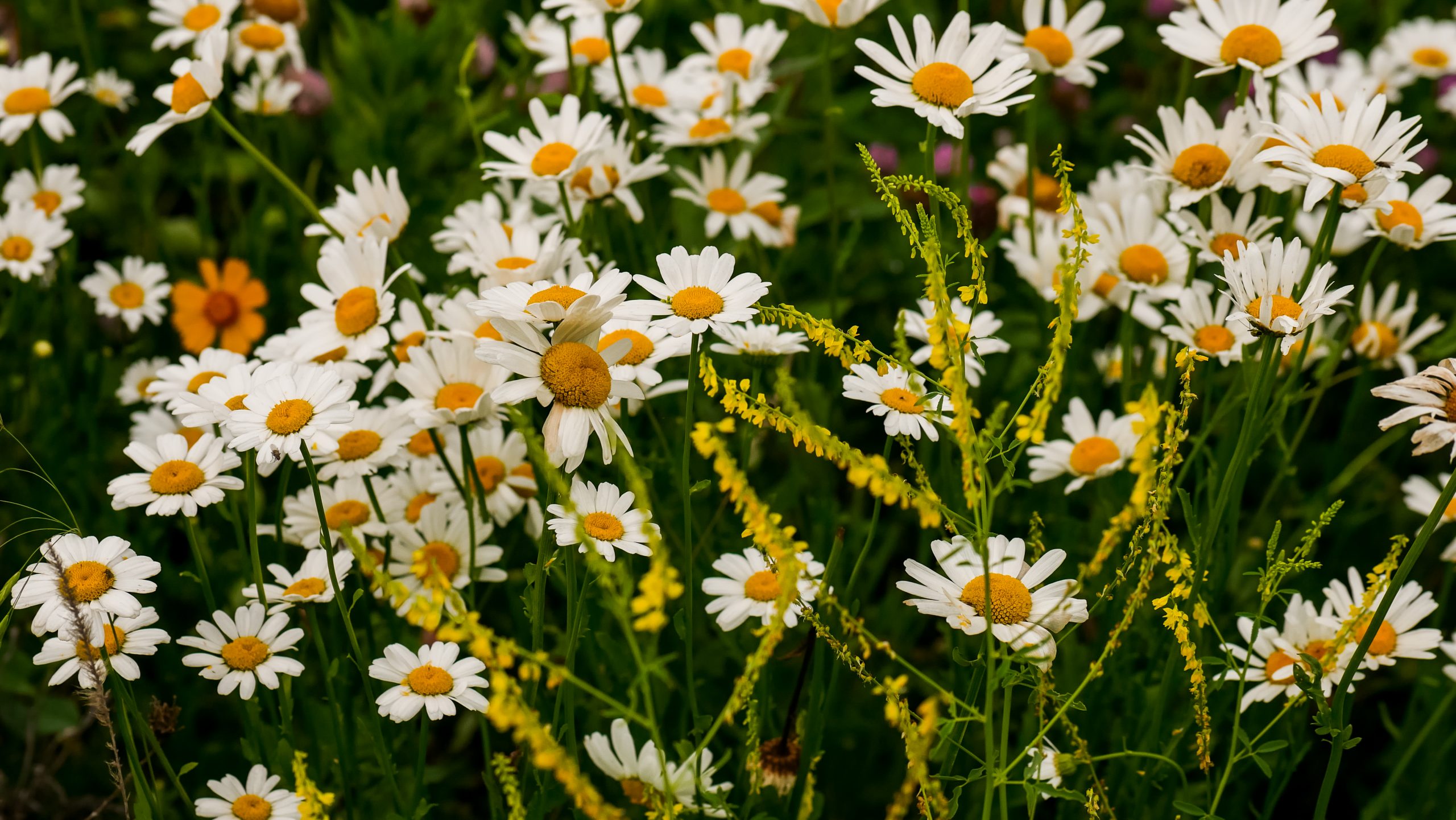Talking About St. John’s Wort
A Herb of Meaning
As the days grow shorter and colder and the embrace of the night deepens, some of us may find that our inner sun is also waning. St. John’s Wort (Hypericum perforatum), which Matthew Wood has held up as perhaps the “archetypal healing herb” and Father Sebastian Kneipp has called the “perfume of God” and the “flower of the Fairies”, can help some of us navigate the states of all pervading darkness which take hold as we approach the Winter Solstice and the rebirth of the light.
In the symbolic language of Alchemy, the metamorphosis of a black bird into a white bird stands for the albedo, or whitening, process – a transformational movement of the psyche out of “its dark and depressive leadened state into a reflective sublimation that lightens the soul and is thought to bring a greater sense of consciousness and freedom. It is a kind of purification process and catalyzes psychic development” (Stanton Marlan, ‘The Black Sun’).
The Rhythmic System
While holistic herbal medicine does not simply prescribe St. John’s Wort for unspecified “depression” but always rather searches for the root causes underlying such a state of body and soul, I do see the “primary yellow flowers” of St. John’s Wort, as Rudolf Steiner described them, as a potential catalyst for this “whitening” process. For Steiner, Hypericum works to combat the malnutrition that stems from an overburdening of the organs of the rhythmic system – “There is the rhythm of the breath, the rhythm of the circulation, the rhythm manifested in sleeping and waking, and countless other rhythmic processes.” St. John’s Wort helps to carry the anabolic processes into the sphere of the nerves and senses and to aid the astral body’s inner mobility. The astral body is linked to the Manipura or solar plexus chakra, and Hypericum is an important remedy for treating conditions of the enteric brain or neural gut.
The Star and Sun
In the words of Julia Graves: “Flowers that shape tufts such as St. John’s Wort (a star with a tuft) point to nerve endings and sensitivity. St. John’s Wort is one of the finest nervines available. All of its starry, sun-yellow flowers look up; they facilitate the prana flowing in through the crown” (Julia Graves, ‘The Language of Plants’).
One may do well to imbibe in the herbal sunshine that St. John’s Wort offers when, as Hölderlin has it in his novel Hyperíōn, it is necessary to “call on Fate to give me back my soul.” Hypericum is a herb of spiritual and emotional protection, as is attested by a traditional use of the oil noted by Deborah Frances: “Recognizing that women are more sensitive and open during menses, women in traditional cultures in Europe painted their labia’s with an oil of Hypericum for protection during moontime.” One need only look at the flowers of St. John’s Wort, with their “golden five-petalled blooms radiating like small sun-wheels around a shower of bobbing stamens” (Susanne Fischer-Rizzi, ‘Medicine of the Earth’), to realize the magnanimous beneficence of this remedy. Fischer-Rizzi continues: “our forbearers saw in these flowers the captured power of the sun, each five-pointed star a sign of the benevolent powers. Ancient druids saw a resemblance to their sacred pentagram while Christians felt it symbolized the five stigmata of Christ.”
Lastly, let us note that the first part of the Latin binomial Hypericum perforatum is a derivation of the name of pre-Olympia God of the Sun; Hyperíōn, which literally means “The High-One.” That the yellow flowers of St. John’s Wort turn blood red when placed into menstruum and processed as a tincture or oil reminds us of the life giving power of the Sun, the Sun which gives without receiving.
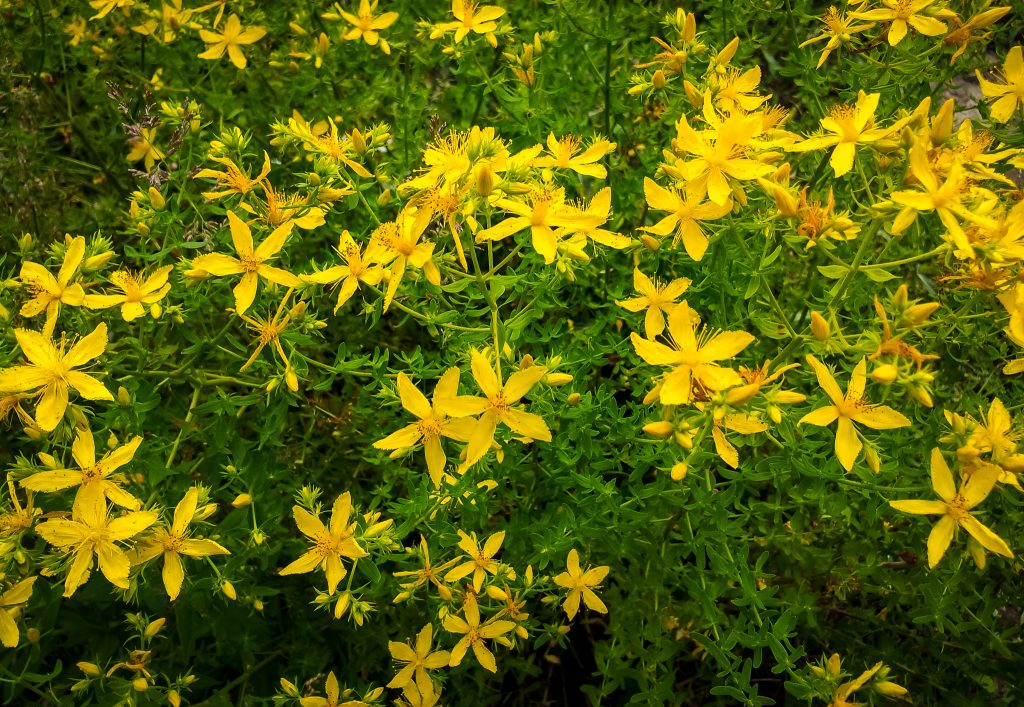
Photo provided by Nick Faunus
From Biophilia to Biophobia
The Love and Distrust of Herbal Medicine
The process of modernization can be described as the transformation of biophilia (the love of and communion with nature) into biophobia (the fear and distrust of nature). Industrialization and the commoditization of everyday life are only some of the more recent forces that cemented this change, which in reality reaches much further back into Ancient Greece and Rome, as can be see in the hegemonic Christianization of Pagan culture, or the decline of Greco-Roman polytheism.
The transformation from biophilia into biophobia should be of interest and concern for herbalists and practitioners of natural medicine generally, as it is the underpinning of the ideological foundation of the ideas that many today harbor towards non-pharmaceutical based healing traditions and practices. These contemporary attitudes which espouse, for example, the notion that plant based healing is dangerous, untrustworthy, ineffective, unscientific, etc., are part of a much larger fear of the wild that stems from a generations long process of alienation from nature. Herbalist and ethnobotanist Wolf-Dieter Storl discusses how the forest, once held to be a magical and paradisiacal realm of great mystery and grace, gradually became a place of fear and trepidation. Wild plants that once provided sustenance in the form of food and medicine to one’s ancestors came to be regarded as potential poisons that should not even be touched, let alone ingested. This distrust and abhorrence of nature is the essence of biophobia. Biophobia is a treacherous trap for the body, mind, soul and spirit that has been laid down alongside and in lock step with the deployment of the global machinery of industrial society and the shifts in human perception and spiritual life that lead to it.
Speaking to the legacy of biophobia in the Western world, Dieter Storl writes:
“Western people are scared of rabid foxes, and they are afraid to eat wild raspberries or blueberries – after all, they might be contaminated with fox tapeworm eggs. And there are ticks, which can cause Lyme disease and encephalitis if they bite you. The best solution is never to go into the forest! (Or you can do what many do when they go hiking, and march through the forest as if through enemy territory). When considered soberly, however, the fear of the forest reveals itself to be mere hysteria. The likelihood of catching rabies or tapeworm in the woods is less than the chance of being hit by a truck. The fear of the forest is the fear of one’s own soul, of the “evil witch,” of the shadows of one’s own personality.1”
The fear of the soul is often tied up with the repression of bodily feeling and somatization (any unconscious and nonvolitional process where physical symptoms are produced as a consequence of one’s ill-founded psycho-emotional attitudes and disposition). It is through the soul that we are capable of producing bonds of intimacy between self and world. The last century in particular has seen massive increases in the technical proficiency of machine technologies, but this has come at the cost of understanding the importance of nurturing the capacity to sense, feel into, and thereby be transformed by the natural world. When this capacity is diminished or lost, nature then becomes something that exists outside the boundaries of the self, something that indeed is thought to threaten the stable foundation and identity of the self. The felt sense of immediate experience, the communion with other-than-human life, is substituted for an abstract realm of thought governed by the separation and division of subject and object, self and other, inner experience and outer nature… When the awareness of “external” nature is repressed, then so too is our own bodily awareness.
Of Repression
There are few places where the legacy of this repression is reflected more strongly than in the transformation of agricultural work and attitudes towards the land. The great Goddess guided early farmers and agriculturalists through her gifts of vision, inspiration and dreams.2 It was understood by our ancestors not only that the Goddess stands as our protectress, but also that she sees, hears, feels, and mourns, that she is part and parcel of every aspect of our experience as living, breathing beings on planet Earth. The benevolence of the Goddess is what makes the soil fertile, and her guidance is what allowed agricultural societies to emerge and prosper. As Dieter Storl continues:
“Agriculture progressed in a continuous dialogue with her [Goddess Nature]. Plowing and tilling the soil were considered an act of love; impregnating Mother Earth was the religion, and those who impregnated her were the worshippers. In fact, the word cultivate originally meant nothing more than service to the gods, honor, sacrifice, and nurturing.”3
A far cry from the Round Up drenched, monocropped fields of contemporary agricultural production.
Of Forgetting
The forgetting of the benevolence of the Goddess should be thought of in relation to the demonization of the Pagan Gods, Ancient Greece and Rome more generally. This was a development that, as noted above, was ushered into being through the proliferation and enforcement of domineering strains of Christianity. We can see this quite clearly in the gradually shifting attitudes and attributes bestowed upon Greek and Roman tutelary deities (i.e. guardian, patron, and protector spirits). Faunus, to take but one example, was the ancient Roman God of the forest, plains and fields, the guide and protector of shepherds, huntsmen and all inhabitants of the countryside. He was a great companion of the nymphs, the feminine nature deities who populated and cared for the myriad creatures of the Earth and presided over the diverse phenomena of nature, from springs and waterfalls to clouds, trees, caverns and meadows. Faunus played a great role in the fertility cults of the ancients, and was honored as an important overseer of both agricultural production and the health of the forest, as well as (in his form or aspect as the God Innus) the primal embodiment of human sexuality and procreative powers.
Faunus was depicted as a voluptuous and sensual being and, in some traditions where he was held to be synonymous with the Greek God Pan, as the inventor of the flute, whose music charmed wild animals and appeased the spirits of nature. Faunus was one of the favourite and most honored Gods of the Romans, as Pan was for the Greeks. Innumerable shrines and monuments in honour of Faunus/Pan were placed throughout the countryside and in wild places. And it was perhaps for this very reason, that of the immense popularity of Faunus and of Pan, that Christian theologians felt it incumbent upon themselves to cast these most beloved of Gods into disrepute, striking fear in the hearts of their worshipers and devotes with the threat of the eternal damnation of the soul.4
Of Demons and Angels
In the Greek translation of the Old Testament, the Septuagint, ‘good’ spirits are described as angels (ángelos, ἄγγελος “messenger”) and ‘evil’ spirits as demons (daimónia, δαιμόνια). This dichotomy of good and evil was foreign to the Greek notion of a daimon, which simply meant “godlike”, “power” or “fate”. Daimons were originally held to be benevolent and benign deities who oversaw the rightful and just fulfillment of fate and destiny, not as less than divine or malicious spirits who corrupted human nature and condemned souls to hell.
Faunus and Pan thus became nightmare demons. Where they were once the bestower of prophetic dreams, they became the harbinger of fearful illusions and malefic hallucinations. Where they once stood as one of the principal life-givers and protectors of the forest, they became the embodiment of the ‘dark’ side of nature, of that which needed to be kept at bay. The Greeks came to see those who suffered from epilepsy, for example, as being possessed by Pan (for the Greeks and Romans alike, epilepsy and madness were very closely related; epilepsy was thought to be the precursor to madness).5 The Romans ascribed a series of afflictions to an incubus by the name of Faunus ficarius, including “emaciation, violent unrest at night, and agonizing pains.”6
Of Written Word
Textual tradition, and the power and authority that came with it, also played a great role in the transformation of medicine from an ancestral, folk tradition of healing to something that was overseen and governed by the men of letters (the state licensed Doctors). In his book The Social Transformation of American Medicine, Paul Starr describes the folk healing traditions of the early American settlers, that the Doctors were later to chastise and condemn, in the following way:
“The family, as the center of social and economic life in early American society, was the natural locus of most care of the sick. Women were expected to deal with illness in the home and to keep a stock of remedies on hand; in the fall, they put away medicinal herbs as they stored preserves. Care of the sick was part of the domestic economy for which the wife assumed responsibility. She would call on networks of kin and community for advice and assistance when illness struck, in worrisome cases perhaps bringing in an older woman who had a reputation for skill with the sick.7“
Many of these women, who carried out the traditions of their ancestors in supporting and upholding the life and health of their communities, were to be persecuted as witches. The folk medicine that they worked to maintain came to be held up as heresy.
The state licensed doctors were as ignorant of the virtues of traditional healing systems as were the Inquisitor’s of the marvelous virtues of the Pagan gods that they sought to demonize. The doctors were able to remove the popular healers with great urgency by falsely casting them as witches who perpetuated evil and misfortune, just as the Inquisitors were able to divorce the Pagans from their animistic immersion in the world through the introduction of the dichotomy of good and evil and the threat of eternal damnation.8
Of Understanding
To understand the state of traditional medicine and the folk healing arts today, and why such traditions have been cast in such a negative light, it is important to understand the conquest of nature that began far back in the ancient world. Such conquest served to gradually divorce humankind from the experience of the living world in its pure immediacy. But the repressed always returns, and the living memory of health and harmony is again today finding its rightful place in the hearts of many.
Footnotes:
1 Wolf-Dieter Storl. Witchcraft Medicine. Vermont: Inner Traditions, 2003. Pg. 2-3.
2 When one looks, for example, to one of the earliest known sculptural representations of the face, the approximately 25,000 year old figure of The Venus of Brassempouy, it becomes abundantly clear how deeply rooted in the ancient past is the worship and devotion to the Goddess as the bestower and protector of life.
3 Ibid, pg. 3.
4 Not all Christians, however, were opposed to Pagan ideals. There was in fact a tradition of associating Faunus/Pan with Christ himself. Both Faunus/Pan and Christ were shepherds. Neither were entirely divine, Jesus Christ being simultaneously divine and human and Faunus/Pan was likewise a God as well as an earthly being, in part due to his very close and intimate association with humankind. Given this fusion of human/divine characteristics in both the figures of Faunus/Pan and Jesus Christ, some later Christian poets, including most notably John Milton, described Faunus/Pan as a pagan prefiguration of Jesus Christ. Such prefigurations were generated by poets who lived mostly after the Reformation period, and not by priests, bishops, or popes, or those were behind the bloody conquests and inquisitions of the ancient world.
5 Marten Stol. Epilepsy in Babylonia. Groningen: STYX Publications, 1993. Pg. 49.
6 Wilhelm Heinrich Roscher. Pan and the Nightmare. New York: Spring Publications, 1990. Pg. 65.
7 Paul Starr. The Social Transformation of American Medicine. New York: Basic Books, 1982. Pg. 32.
8 For more on this, one can consult the work of the the American anarchist historian and activist Fredy Perlman, who describes the conquest of the doctors in the following vivid language: “The so-called witches, heiresses to the informally transmitted knowledge of herbs and illnesses, are known to be healers, whereas the Doctors, notoriously ignorant of all this lore, are intent on establishing a State-licensed monopoly over illness so as to police the sick. The Doctors will eventually appropriate some of the herbal knowledge of the exterminated witches, but the healing will always be incidental to the policing. They will persecute illnesses even if they have to turn human beings to vegetables or cut them to shreds… Leviathan’s licensed agents even move to expropriate radical visionaries of their memory of human freedom, kinship and community. State-licensed visionaries, Masters and Doctors of Letters, Philosophy and Metaphysics, send their tentacles probing among the last traces of memory’s remembered humanity. The lettered Doctors appropriate the witches’ healing arts.” Fredy Perlman. Against His-Story, Against Leviathan!. Detroit: Black and Red, 1983. Pg. 238.
Photos by Serena Mor
Nettle Seed
Nettle Seed
(Urtica dioica semen)
Etymology
- urtica from the Latin “urere” meaning to burn
- dioica from Latin for “two houses” – this refers to male and female flowers occurring on separate plants.
- Nettle from the Anglo-Saxon word “noedl” meaning “needle”.
In contemporary western herbal medicine, nettle seed is essentially an energizing trophorestorative for the kidneys. Some herbalists also refer to nettle seed as an adaptogen.
Historical Uses
Let’s begin with historical uses.
First Historical use of Nettle Seed:
Nettle seed was part of the feed given to horses that were much loved. It made their coats shiny and they appeared to have more vigor.
This is important because the coat of an animal, or the hair of a human, will tell you a lot about the health of the body from which it sprouts. Hair that lacks lustre and fullness, unless there is male pattern baldness (androgenic alopecia) which is hereditary, suggests the body lacks the nutrients it needs. The body will sacrifice the hair in order to conserve nutrients needed for more necessary functions. If malnutrition is prolonged, changes can also be seen on the nails and skin.
So, we know from those who fed their beloved horses nettle seeds had healthier animals with sustained vigor. We can hypothesize this is because of the nutrients in the seed.
Second Historical non-use of Nettle Seed
Monks during the middle ages, 500 CE to about 1500 CE, were forbidden to take nettle seeds. It was considered an aphrodisiac. They were given Vitex agnus castus seeds instead. This plant suppresses libido in men.
We now know that Nettle seeds awakens the sexual appetite in men. A vigorous sexual appetite suggests gusto for life. This suggests the Nettle seed in some way nourishes the endocrine system. The endocrine system is responsible for survival of the species. It does this by releasing hormones that govern of many of life’s survival actions including inflammation and fever as well as fight, flight and freeze and sex. Sex being essential for the survival of the species.
Nettle Seed, as do most seeds, are high in essential fatty acids. These oils are necessary for a healthy functioning endocrine system which includes both sexual and immune health.
Third Historical use of Nettle Seed
Culpepper, an English herbalist from in the mid 1600s, had many uses for Nettle Seed. From Culpepper’s Complete Herbal…..
The seed provokes urine, and expels the gravel and stone in the reins or bladder, often proved to be effectual in many that have taken it. The same kills the worms in children, eases pains in the sides, and dissolves the windiness in the spleen, as also in the body, although others think it only powerful to provoke venery… The seed being drank, is a remedy against the stinging of venomous creatures, the biting of mad dogs, the poisonous qualities of Hemlock, Henbane, Nightshade, Mandrake, or other such like herbs that stupify or dull the senses; as also the lethargy, especially to use it outwardly, to rub the forehead or temples in the lethargy, and the places stung or bitten with beasts, with a little salt.
From Culpepper we learn about Nettle seed’s direct actions on the kidney. Remember contemporary herbalists now most commonly use it as a kidney trophorestorative. Culpepper tells us it removes kidney stones.
He also suggests it has anti-parasitic actions as well as anti-viral actions. Rabies is a viral infection. This is very interesting to me as I see a lot of infections in my practice and we are currently living with a virus that is changing all our lives.
What Else Can Nettles do for Us?
Constituents of Nettle – not necessarily the seed as most research is done on the leaf – is demonstrating anti-viral activity. For further reading, you can check out this link [here].
One of the primary finding’s researchers noticed when offering nettles as medicine, is the lack of weight loss and vitality when mice were injected with a killing virus. This refers back to those who love horses already knew: Nettles are a super food! And Nettle seed is a super, super food!
The Kidney
Herbal Medicine is the relationship between plants and the body/mind complex. To understand a plant’s medicine, one needs some understanding of the organ or system that the plant effects.
The kidneys are mentioned 5 times in the Hebrew Bible as the organ as God examines to pass judgement on the soul. It is said, Abraham learned the laws of God from dreams offered by his kidneys at night.
“I will bless the Lord, who has given me counsel; my reins also instruct me in the night seasons” (Psalms 16:7).
The ancient Jewish sacred text the Talmudic corpus teaches that one kidney offers good advice, while the other offers bad advice.
In Traditional Chinese Medicine, it is often said that the kidney is where fear resides in the body. The word for fear in Mandarin is Haipa. Haipa is broken into two pictograms; “Hai” which is translated as harm, evil, kill and calamity, and “Pa” which translates into afraid, fear and dread.
Translations of Haipa are; to be scared, to dread, to lose courage, to be unable to endure and to worry.
I find these considerations of the “emotionality” (for lack of better word) of the kidney’s important when we are speaking of Nettle Seed as a kidney trophorestorive. If we consider these ancient understanding of kidneys – a kidney trophorestorative is a plant that restores the courage, resiliency and the power to stand in our creative goodness.
This brings us to the adoptogenic effect of a kidney restorative. Adaptogenic herbs act on the adrenal glands to moderate the body/mind’s response to stress.
Stress is such an overused word today that it has almost lost its significance. “We are all stressed out!” Think of stress as the loss of courage, coming from the French word for a “good heart.” When we lose the good heart of courage, we begin to worry. The worry spirals into fear and soon we are waking every morning with dread in our bellies.
Nettle seed restores the courage to the heart by easing the worry from the kidneys.
A More Physiological Understanding of the Kidney.
The kidney controls the tension or relaxation in the heart and all the blood vessels and therefore the delivery of blood carrying nutrients and oxygen to the rest of the body – including the brain. Relaxed, but not too relaxed, circulation means every cell in the body receives the nutrients it needs to be vibrant and healthy. Tension in the kidney has a influence on every cell in the body. Worry creates tension!
The kidney also filters blood. In a cadaver antonym class, squeeze a kidney and it’s like a sponge releasing fluid. The kidney filters the by-products of metabolism, particularly protein metabolism and maintains electrolyte balance. If the kidneys are hindered in their ability to filter the by-products of metabolism, the skin takes on the role. This is why people on dialysis often have the smell of urea coming from skin. Their skin is doing the work on the kidney (back to those horses).
Electrolytes balance the fluid levels in your blood plasma, interstitial tissue and within your cells. Electrolytes maintain the pH balance of your body and enable the contraction of your muscles including your heart and arteries and participate in transmission of nerve signals.
Your kidney’s actions touch every part of your body and can have a profound impact on your mental well being as well. When you take a kidney trophorestorative, you are supporting not just your kidneys but your whole body.
Signs and Symptoms That it’s Time to Take Nettle Seed
- Mid and low back ache when standing. It feels like fatigue in your back. (This, for me, is the key indication that Nettle seed is needed.)
- Dread and fatigue in the morning upon waking. This fatigue can pause once you up and getting on with your day, or it may remain if it has moved deeper into your beingness.
- Aching legs worse with cold.
- Water retention, swollen tongue.
- Low libido.
- Sighing.
When Not to Take Nettle Seed?
- When someone is completely depleted. Nettle seed carries a lot of energy. If someone does not have inner reserves, you may want to begin with Nettle leaf and as the person re-energizes introduce Nettle Seed.
Dosing
Start low and go slow. It is very invigorating and can interrupt a delicate sleep pattern if take too late in the day.
More recourses on Nettle Seed:
- https://www.researchgate.net/publication/242275567_Urtica_semen_reduces_serum_creatinine_levels – Johnathan Treasure’s research into Nettle Seed credited with awakening the current interest in the plant.
- http://ravensongseeds.com/blog-post/nettle-seed-season – This is a fantastic article with harvesting tips and recipes and much more.
- https://napiers.net/blogs/news/nettle-seed-uses – Some curious clinical applications of the Nettle seeds. One needs to check the resources though.
Ode’imin: The Heart Berry
“The Heart Berry”
The warm weather is here and it brings a special gift, an abundance of Ode’imin, considered a sacred food to Anishinaabe people. Out on my walk, her little five petaled white flowers are catching my eye and signaling what’s to come… little juicy red berries! Ode’imin (pronounced “O-day-min” in the Ojibway language) means “heart berry” – referring to what we know as the strawberry.
Medicinal Properties
Strawberries are so good for us! They are high in vitamin C, a known antioxidant that boosts the immune system. They are also a source of potassium which lowers blood pressure. Actually, the entire plant that includes the leaves, roots and berries are medicinal. It is a mild astringent and diuretic. A decoction of the leaves and roots may be used for diarrhea or to support kidney function and detox the body. A strong decoction of strawberry leaves may be used to cleanse the skin and heal eczema.
The Art in “Heart”
As an artist, painting Ode’imin brings me joy. The bright red berries just pop in colour on the canvas. This month I had the opportunity to teach teachers! A group of educators completing their AQ (additional qualifications) course in Indigenous ways of knowing joined me in a virtual paint night where we painted together and chatted about Anishinaabe art and strawberry teachings.
With my cup of strawberry leaf tea in one hand and paint brush in the other, I shared that in our culture strawberries are included in many of our ceremonies. During ceremony, we sit in a circle and a wooden bowl full of berries is passed around that has been prepared by our women. We are instructed to eat the entire berry including the little green leaves that sit on top. Although we commonly remove this part of the berry, we are told by our elder that this part is not only full of medicine but it is also part of the spirit of the plant.
I also shared that Ode’imin is considered a women’s medicine in our culture because when a young woman receives her first moon time or cycle, it was traditional to do a berry fast. During this time the young women would fast from eating berries for an entire year. During that year she would spend time receiving many teachings from her mother, aunties and grandmothers. The young woman would end her berry fast by gathering berries and holding a ceremony and feast with her community. This was a beautiful time for our young women.
Our evening painting together was not only creative and informative but served everyone’s wellbeing, just as Ode’imin does. Spending time with others even virtually during stressful times is healing and good for the soul. Further, when you are creating with no expectation other than being present, you can relax and let your creativity flow and let the stress disappear.
Blog photos and art provided by Lauri!
Herbal Histories: Chalid Ottway, Planetary Herbalist
Consumers in the United States spent an estimated $9.602 billion on herbal dietary supplements in 2019, an 8.6% increase in total US sales from the previous year, according to the American Botanical Council’s (ABCs) 2019 Herb Market Report.
And this is expected to increase for 2020 and 2021. Yet 95% of these sales would not exist without the work and devotion to their craft of the herbalists of the recent past. Herbal medicine today truly stands on the shoulders of all those who came before.
In this blog we will look more into some of these herbalists, Starting today with one of my favourites Mr Chalid Ottway, a true descendant and student of Aviccena – one of the greatest herbalists who ever lived. (To learn more about Aviccena, see Mr Ottway’s short biography of him at the end of this blog.)
The Beginning
Chalid Ottway was the descendant of a notable Arabian family, dating back many generations, all of whom were distinguished for their knowledge of medicine and service to humanity. Looking to expand his horizons and to bring his skills and gifts to a new audience, he arrived in Toronto, Canada in the 1920’s.
Canadian medicine in those times was very different from today of course. As was the culture. As an “Arab” Mr Ottway had to deal with rejection and contempt as he tried to present his methods, remedies and formulas to a suspicious Canadian public. The medical establishment of the time ignored him, the people had no time for him. He had no social status and had arrived in Canada with virtually nothing. What was he to do?
Mr Ottway, a deeply spiritual man and devoted Muslim in the very best sense, decided to fall back to the original methods of his historical mentors. He set up a stool and box, that he carried around on the corner of Canada’s busiest streets – Yonge and Bloor in Toronto. A hand written sign offered to cure corns of the feet free of charge and he sat and waited for his first “customer”.
Corns can be painful, and back then many of the abundant patent remedies were useless. I am sure that many passers-by were willing to try anything. And of course, you guessed it, his remedy worked spectacularly!
Word soon spread of the “little Arab” on the corner, and people began asking him for more remedies. Crowds gathered around, forcing him to seek out proper premises, which he found on Danforth Avenue in 1930, just east of Yonge and Bloor.
From then on Mr Ottway’s business thrived. He produced multiple products at his store and sold them all over Toronto. As his fame spread he set up a mail order section at his store and shipped his products all over Canada. Some of his more famous products included Nerviton tablets (obviously for the nerves) and his Herbiton tonic and pick-me-up. Check out the pics of his product labels!

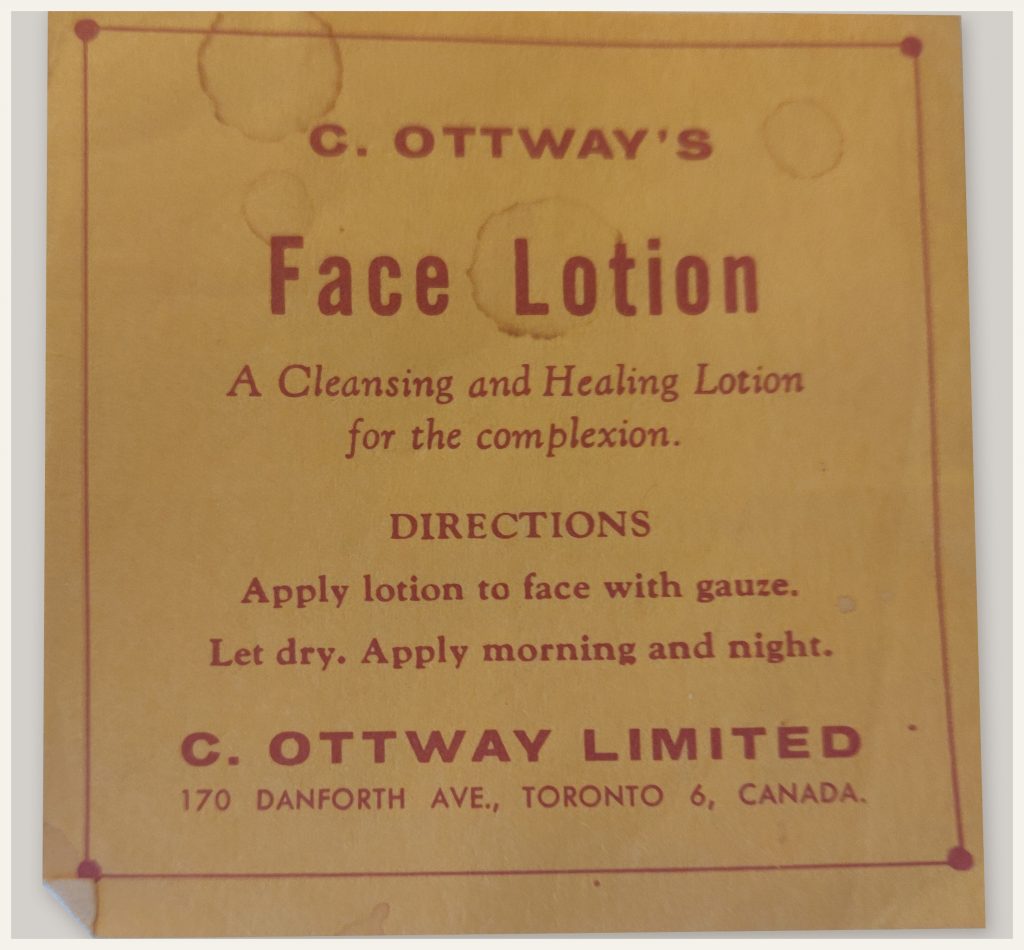
(Photos of these labels taken by Nick Faunus)
Mr Ottway became a popular and highly regarded Toronto character and was featured in the newspapers and on the radio. On one occasion he was taken to court for “illegally practicing medicine” but the public outcry against this was so great that the court summarily dismissed the charge, and he was never charged with anything again. Mr Ottway was also generous in his support of the poor and disadvantaged, giving free remedies and advice wherever it was needed.
Once, when he heard of a small boy suffering badly from boils, he offered to take care of him – and the boils cleared up in five days! After seeing the suffering that the poor boy went through, he vowed never to charge for the formula and gave it away freely to whomever needed it. The treatment consisted of only five capsules!
Along with Thuna’s (that’s another blog!) Ottways was the primary source for herbs in Toronto, up until the early eighties. Mr Ottway died peacefully in his sleep at 70 years but the products were still being made by his assistant Mathew Cameron, until he retired in the late eighties. The business has changed hands several times since then and still exists in a different location, but is still on Danforth Avenue. However, the unique products are gone and are no longer made there, although the store carries a wide selection of modern high quality products.
A personal note …
Mr Ottways story appeals to me for many personal reasons. I too arrived in Canada with nothing but my bag of herbs, and had to go out on the streets to sell them, in the early eighties, to live and eat. It was a struggle at first though always fun and fulfilling, but like Mr Ottway I never doubted the power of the herbs and my faith in them was rewarded many fold.
Most importantly I met my wife there in 1984 (she was working in the dispensary in the back). She heard me talking to the owner about some herbal products I was hoping to sell and caught me on the way out. She barely spoke but handed me a piece of paper, which I looked at when I arrived back at my rented room. It was her phone number, and we were married within a year! This year marks our 36th anniversary.
Isn’t it amazing what herbs can do for you!
We are always interested in learning more about Mr Ottway (and other past herbalists). If you have a story about him please get in touch with us here at hello@everythingherbal.ca!
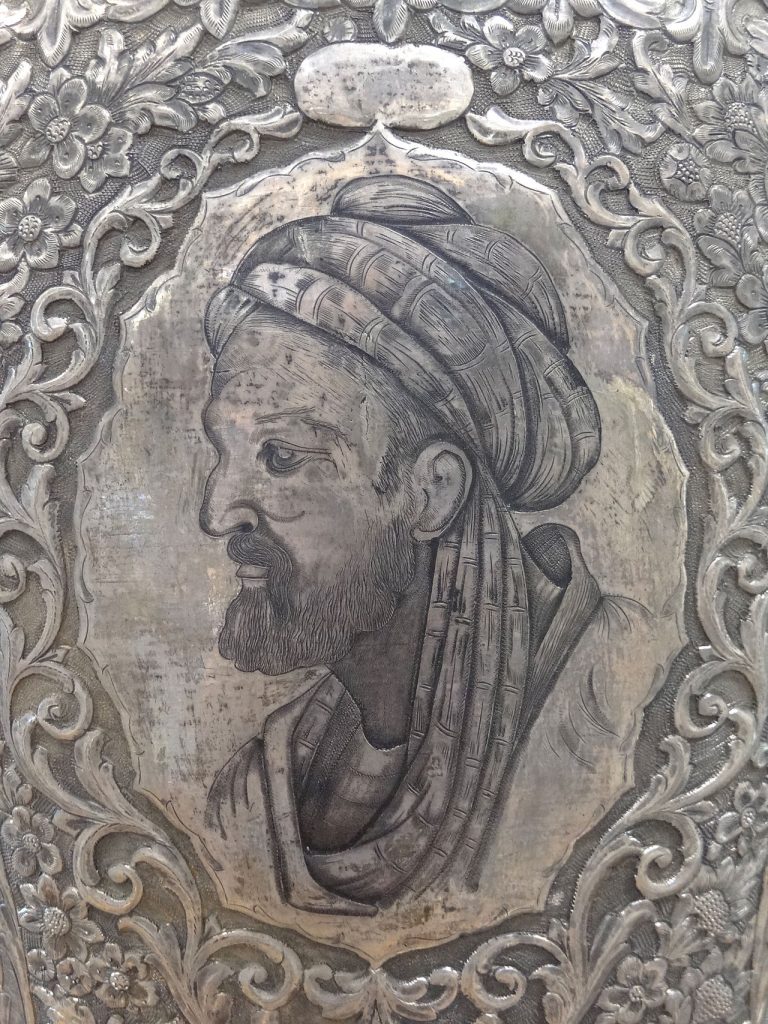
The Prince of Physicians
by Chalid Ottway.
In the region of Ibn Mansur, Amir of Bokhara, Arabia, in the year 980 A.D., in the town of Afshena, the first son of the Collector of Taxes was born. This boy, Abu, Ali Al-Husain lbn Abdallah lbn Sena, whom we shall call by his better known name, Avicenna, was destined to a career of undreamed of brilliance. He was to give to mankind new and superior methods for the prevention and treatment of disease that were to revolutionize the standard practices of his time, and to leave behind him the illustrious title. Prince of Physicians.
When Avicenna’s younger brother was born, his parents moved to Bokhara, which was then the chief city of the Moslem world, famous, even before its conquest by the Saracens, for its culture. Here, Avicenna was placed under a noted tutor, and soon proved himself a most precocious student. At the age of ten, he had not only mastered the Koran, but the Arabian Classics as well, and his tutor made no secret of the fact that the position of pupil and teacher was now reversed.
With an ambition that brooked no denial Avicenna continued to study medicine, astrology and kindred subjects, under the tutelage of the wandering scholars who, at that time, made their living by attending the sick and imparting their knowledge to the younger men. It was not long before Avicenna discovered that in most cases, his so-called teachers were nothing more than charlatans, or that his own learning was far in advance of theirs.
Aided only by the written works of others, he continued to study the higher branches of the Arts, and assiduously put into practice his medical knowledge. History records that he read “Metaphysics by Aristotle” forty times in an endeavour to fully understand this ponderous work, but in spite of this continual reading, its meaning remained hopelessly obscure, until for a few cents, he purchased a commentary written by Farribi. With this simple little aid, he obtained a complete mastery of the subject matter contained in Aristotle’s works.
At the age of sixteen, he had mastered medical theory and according to his own accounts, perfected his methods of treatment and preparation of remedies by continual attendance upon the sick without charge.
At the age of seventeen, he was appointed Chief Physician to the Amir, after having cured him of a dangerous illness that had baffled the noted doctors of the time, and was further rewarded by being given access at all times to the wonderful collection of books in the Royal Library.
A few years later, the Library was totally destroyed by fire. Avicenna’s enemies accused him of arson, saying that it was his intention to conceal for all time the sources of his marvelous powers and learning. This contention, however, was never proved.
All through the period in which Avicenna lived, his country was riven by feuds and war. In the year 1004 the Saminid Dynasty came to an end. Declining the offer of the position as physician to Mahmud the Ghasnivia, he began his wanderings from town to town in Khiva and Khorasan seeking an outlet or market for his talents.
During the siege of Darlem, in 1012, Avicenna suffered so from privation, that he was taken seriously ill. When he recovered, he sought the assistance of a friend and settled in Joryan, near the Caspian Sea. There, he lectured on logic, astronomy and medicine, and wrote several treatises, in addition to commencing his famous “Canon of Medicine”.
The constant feuds of those in power, forced Avicenna to travel west, and he stopped at Rai, in the vicinity of modern Teheran. Eventually he settled in Hamadan, where he continued his prolific writing, completing thirty more of his works, and his Canon of Medicine, comprising in itself five volumes, which were dictated and explained to his pupils day by day.
He was consulted by the Amir who afterwards appointed him to the office of Vizier. This appointment caused much jealousy, and roused Avicenna’s enemies to plot against his life. An order for his execution was signed by Shamus Addaula, and Avicenna was forced to hide in the cellar of a Sheik’s house for forty days, at which time a pardon was obtained by royal command in order that he might attend the Amir who was very ill.
War, prison and privation, coupled with the intense mental strain of overwork, punctuated by strenuous bouts of material pleasures, undermined Avicenna’s constitution and depleted his stamina.
During one of the ever recurrent campaigns, he was seized on the battlefield with a serious stomach trouble. He applied to himself remedies that were so strong that he had to return to the city. A similar seizure at a later date warned him that the disease was gaining ground. He resigned himself to his fate, realizing that his weakened system could not stand the arduous regimen necessary to check the disease.
With characteristic thoroughness he bestowed all his goods upon the poor, and freed his slaves. The latter part of his days was spent in listening to the reading of the Koran, from which he derived much comfort, and thus in the month of June, 1037, Avicenna passed from this world. But the works of this Prince of Physicians lived on, and became the guides to the medical study in the European Universities from the twelfth to the seventeenth century, and are again, in the writings that will come*, carrying on their task of enlightenment and mercy.
A Note on Pronunciation
It is felt that it is wise to give here a literal translation of Avicenna ‘s name, since the one with which we are familiar is in reality the English corruption of his Arabic nickname. It is well to keep in mind too, that each Arabic word has several meanings, so that a word may appear in its translated form at one time in one manner, and at another in different manner.
Abu Ali Al-Husain lbn Abdallah lbn Sena
Abu – Title of respect such as our Sir.
Ali – His father’s given name.
Al – Roughly translated, in this case means, of.
Husain – The Persian calling of the family name, which is in Arabic, Nesaif.
Ibn – In this case, means son.
Abdallah – Avicenna’s given name.
Ibn Sena – Son of Abyssinia, or coming from Abyssinia.
It was by this name that our Doctor and Philosopher was known, that he might be distinguished from others of the same family name, and it is from this nickname, Ibn Sena that the English corruption, Avicenna comes.
So, literally, we have Mr. Ali Al Husain’s son, Abdallah, who comes from Abyssinia.
*Note: I intend to feature extracts from Chalid Ottway’s writings in future blogs, including some of his wonderful formulas!

